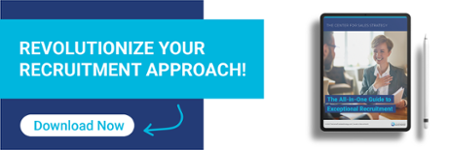 Those who know me well know I adore hunting… for shoes, that is. I absolutely love pursuing the perfect pair of shoes. But I know that finding the right shoes doesn’t “just happen.” It is the result of continuous and constant effort, of skill and dedication. I invest time shopping. I scour fashion magazines and rip out pictures of pairs I like. I look at shoes online and sometimes save them in my “basket.” I prowl and stalk the shoe departments of my favorite stores like a quiet lion might pursue its prey. I admire them from a distance, I court them, I negotiate price, I wait for special deals and eventually, when the time is just right… I go for it and make them mine.
Those who know me well know I adore hunting… for shoes, that is. I absolutely love pursuing the perfect pair of shoes. But I know that finding the right shoes doesn’t “just happen.” It is the result of continuous and constant effort, of skill and dedication. I invest time shopping. I scour fashion magazines and rip out pictures of pairs I like. I look at shoes online and sometimes save them in my “basket.” I prowl and stalk the shoe departments of my favorite stores like a quiet lion might pursue its prey. I admire them from a distance, I court them, I negotiate price, I wait for special deals and eventually, when the time is just right… I go for it and make them mine.
Shoe Shopping is Like Recruitment
I see a very big difference and a very clear division between shoe “shopping” and shoe “purchasing.” They are two very distinct activities in my mind… one is always happening the other happens occasionally. The same is true for Recruitment and Selection. Most speeches, books, and articles on this subject lump them together, as if “Recruitment-and-Selection” is a single process. That’s a mistake. They are two very different activities.
Shoe Purchasing is Like Selection
Sales managers who are most effective also think of Recruitment and Selection as separate activities. Recruitment is something they focus on all the time (just like I am shoe-shopping all the time). Selection happens only once in a while, when the manager has a job opening. When they are thought of as one process, not two, both suffer and hiring mistakes follow.
Talent is an essential part of both Recruitment and Selection. When you’re in Recruitment mode, you’re shopping around for talent not just people. You are looking for specific behaviors and characteristics that you know you need in your organization—just as I am specific in my shoe shopping (I am currently on the lookout for a tall boot, in black leather, with a low-heeled lug sole and silver zipper accents. I am also on the prowl for new running shoes, ones with extra support and a fun color. I don’t need new ones yet, but the time will come and I want to be ready!). You may be on the lookout for a salesperson who is high energy, full of ideas, and a superb negotiator. You may also be looking for someone that is extremely client-focused, good at nurturing relationships, and also loves networking events.
File Talent Away Like Shoes You'll Purchase Later
When you find someone who fills the bill, you put them in your talent bank (much like I save shoe pictures from magazines). You keep adding to your talent bank and building it up over time. Make no mistake: This does not “just happen” organically. You have to make time for it. You ask people you know to suggest (nominate) people who display the behaviors (talents) you are looking for, you check in with local colleges, you browse LinkedIn, you network in the community. You do these things consistently. I am always on the lookout for shoes and always recruiting new shoes to add to my collection. I never walk past a shoe department without at least taking a look—and sometimes a photo to store away for later.
Then you begin the courting stage (because, while stalking shoes is okay, stalking people is frowned upon). You touch base with the people in your talent bank periodically. You meet them for coffee, you send them an article. You keep tabs on where they are in your process (and their process, too)… are they “just a name” or are they “ready, willing, and able?” Are they a “newbie seller” or are they a “veteran?” What talents do they bring to the table, what skills and experience? You keep these relationships going because, when an opening develops and you need to make a selection, you want to know as much as possible about each person in your talent bank (including their availability).
When that opening arises, the process changes. You are no longer browsing for talent. Now you are selecting. You start by defining exactly which talents you need for this particular opening. You spec out exactly what you need and then you look in your talent bank. Choose those people who might be good match to your specs. This is the time to invest in a structured talent interview for each of those people—so you’ll know for sure which talents each one has and how their strengths and weaknesses will play out on the job. You check references, you negotiate, you make a decision, and you bring them on. How good does that feel?? There is nothing quite like finding the perfect fit!



